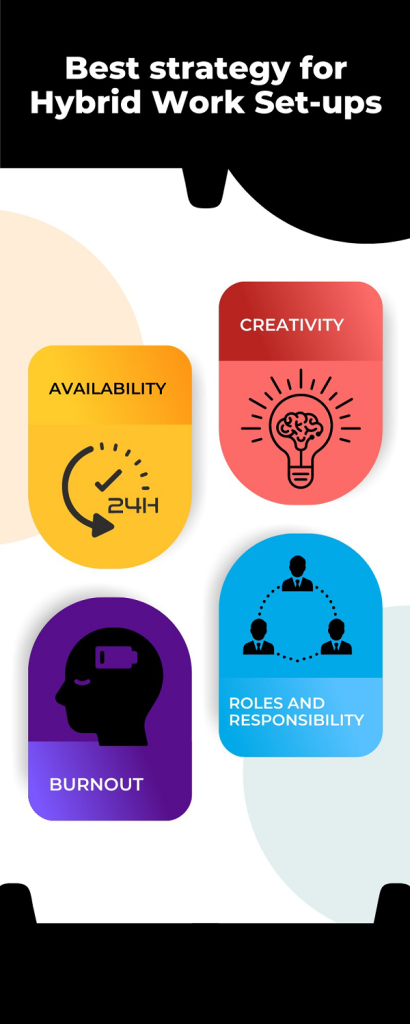Within the past few years, HR leaders have become more accepting of hybrid work. Flexible and remote working was previously considered luxuries but became necessities as work changed.
According to a Foundry report released on June 23, remote and hybrid work will remain the norm. Despite many companies’ initial uncertainties, the shift was successful.
As a result, more leaders and employers will likely utilize tools like hybrid work software to aid the transition. Forty-nine percent of the respondents in the study expected this kind of work arrangement soon.
Are HR Leaders Struggling with Hybrid Work?
The advantages of hybrid work make it easy to see why HR leaders shifted arrangements in the past few years. But not everyone takes to hybrid work smoothly.
A 2022 survey by Gartner, Inc. found that more than 200 HR leaders struggle to keep up with hybrid work. Only twenty-five percent of employees feel connected to their organization’s work culture, which they see as the most challenging aspect.
A healthy office culture means that employees can align and connect with it. In-person office time no longer works, meaning managers and leaders need to foster connectedness through other methods.
There are a few other challenges businesses often face, even with the best HR management systems and policies:
Communication
Essential communication is challenging without the right hybrid work software to support this work model.
However, aside from technical difficulties, people are more comfortable with specific modes of communication than others. This can create certain barriers paired with language and time zone differences.
Talent/Innovation
People need time by themselves to generate ideas and insights. But sometimes, opinions and insights need collaboration and collective brainstorming. Creative teams primarily work best when working in person to create unique solutions to problems.
Zoom meetings can help people communicate, but it’s not always the best solution. Casual conversations may be just as crucial for fostering creativity.
Connectivity
Connectivity can challenge more prominent companies that want to embrace hybrid work. Internet connections in places like homes and coffee shops can fluctuate, making it difficult for employees to complete tasks.
Personal and social connections are challenges even the best HR management systems have to overcome. Hybrid work models need to address the need for mentoring and interpersonal relationships for employees’ well-being.
Data security
Keeping data secure within an internal network is much easier when employees are in the office. With work-from-home arrangements, it can be more difficult.
Data is just as critical for employees as it is for employers. For a smooth and secure experience, HR and IT teams must collaborate to create unique solutions for the company.
What’s the Best Strategy for Hybrid Work Set-ups?
In today’s post-pandemic industry landscape, work is no longer a place but the job itself and how it’s done. However, a 2022 survey by Future Forum Pulse shows a mismatch between priorities. Employers want visibility, while employees enjoy the freedom to work anytime, anywhere.
HR leaders are in a unique position to ensure a balance between the two. The resulting strategy will also inform the hardware and software for human resource management and other departments.
Creating a flexible workplace isn’t a “one-size-fits-all” solution, but there are a few questions that can guide effective ones:
- Availability – Do employees need to respond and exchange information immediately when on the clock? Do they need to hold meetings in person?
- Creativity: Do employees innovate regularly or perform routine tasks?
- Burnout – Are employees new, recently promoted, or tenure? Do they struggle with low performance? Do they feel overwhelmed or disconnected?
- Roles and Responsibilities – Do employees understand their roles and responsibilities? Do they have one defined role, or do they take on multiple positions in the company?
How Can HR Leaders Keep Remote Employees Connected and Engaged?
Remote and hybrid work arrangement is here to stick around. They give employers and employees many benefits and can provide a better work-life balance. The challenge for HR leaders is creating a hybrid work strategy to keep employees engaged.
It becomes possible with adequate planning and human resource management software. Here’s how:
Focus on small-scale connections
If hybrid work can accomplish one thing, it’s making corporate ecosystems feel smaller.
As a result, employees interact, socialize, and connect with fewer people. These relationships make up most of their experience, especially when built within a Microsoft hybrid workplace.
HR leaders can capitalize on this and foster these vibrant micro-cultures where employees “feel” seen, recognized, and valued.
Create connections through work
Office culture “osmosis” through physical proximity is no longer the way since employees work over hybrid work software.
With this common factor out of the picture, HR leaders need a new common aspect to unite employees. Today, the new common factor is the work itself, which is applicable no matter where they are.
Companies mustn’t actively force office culture and connections. Instead, they should encourage employees to engage with each other independently.
Watch for burnout
While job burnout isn’t new, its rise in scale and intensity in recent years is unprecedented. Microsoft recorded the highest point in 2021 to be over fifty percent among US workers.
The good news is that it’s possible to manage it among employees before it worsens. There are a few tips employers should keep in mind:
- Encourage vacation use – Many employees are unlikely to take paid leave unless it’s a rare occasion, the year’s end, or extreme strain. Employers can encourage workers to take “mental health breaks” to address the third option.
- Talk about mental health – Mental health is crucial for employees and employers. An HR management system software is the best avenue for proactively sharing mental health resources to ensure their well-being.
Invest in the right tools
Digital tools are more critical than ever. During the pandemic, many businesses used software to shift work in a new direction. Many great platforms in the market can help achieve the following:
- Creating dynamic feedback – Positive relationships are fostered between employees and their managers when they can share and receive information quickly.
- Fostering team connections: Face-to-face interactions are best for stimulating the flow of ideas. However, hybrid work software can be the next best thing instead of uniting teams in remote work.
What’s the Future of Hybrid Work?
Hybrid and remote work set-ups can be powerful and beneficial tools that can transform a company when used correctly. It’s the perfect balance between employee and employer expectations, and its widespread use means it’ll stick around.
However, there are many ways it can backfire. HR leaders must be aware of the many challenges in fostering connections and engagement to keep employees invested. This makes the right strategies and human resource management software essential for success.









Leave A Comment